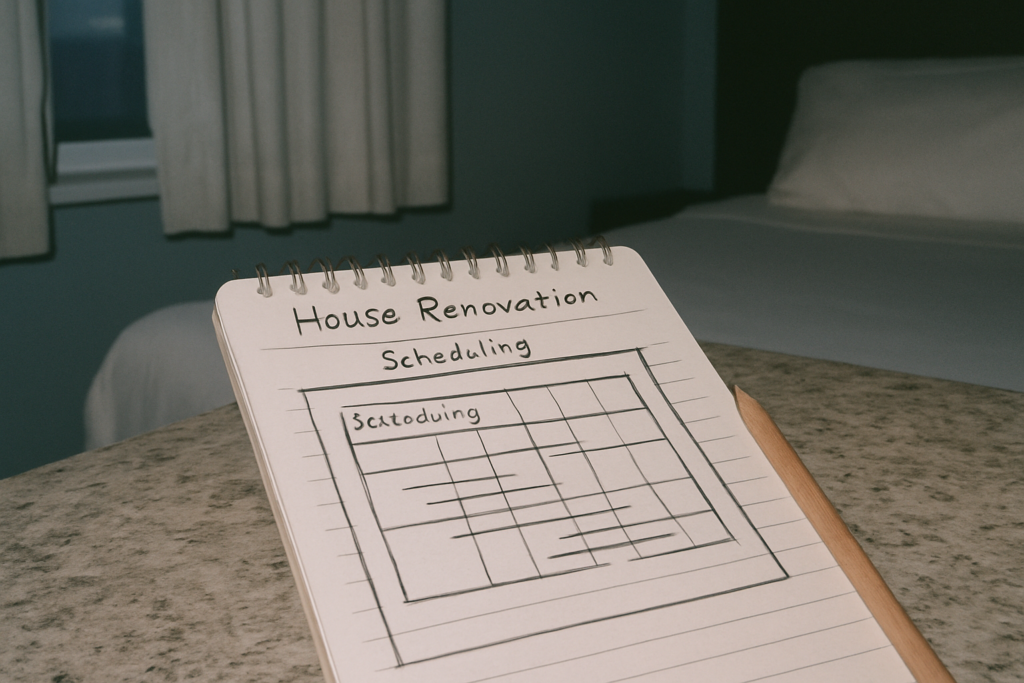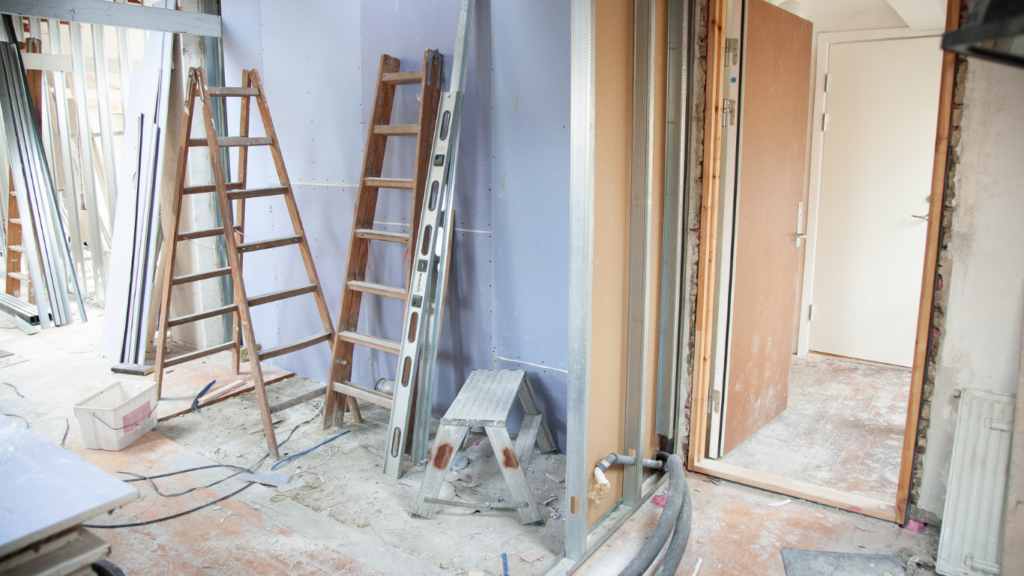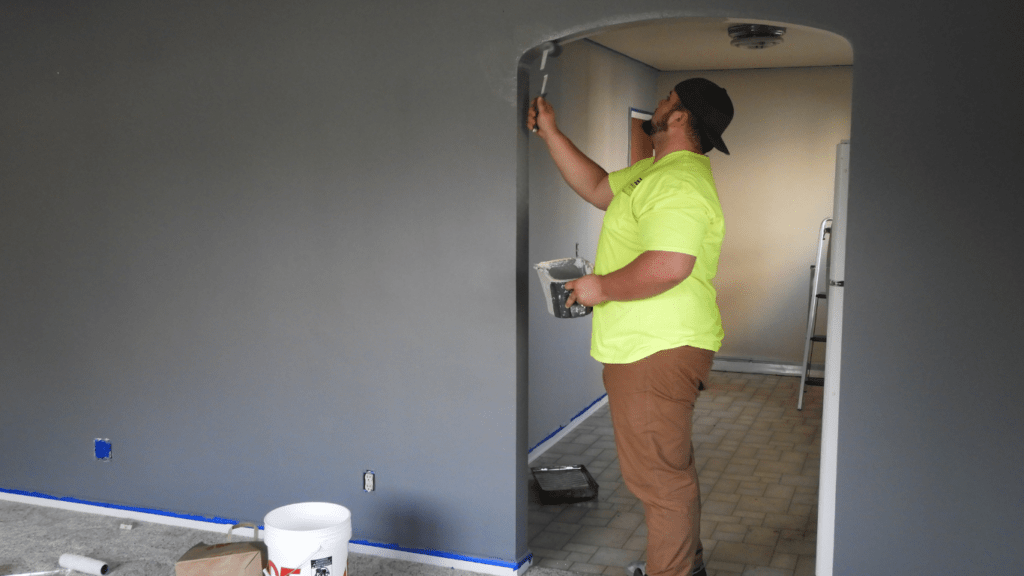Get Crystal Clear on Your Goals
Before you start pricing tiles or knocking down walls, get brutally honest about why you’re renovating in the first place. Are you fixing a layout that doesn’t work? Trying to boost resale value? Or simply making a space that feels more like you? Knowing your core reason upfront keeps your project aligned when mid renovation chaos hits.
Next, draw a hard line between what you want and what you need. Heated floors and invisible speakers sound great until the plumbing overhaul eats half your budget. Focus first on structural integrity, flow, and day to day function. The polished stuff can follow.
And don’t skip the must haves list. Write down your non negotiables early (e.g. more storage, better lighting, dedicated work nook). These are the anchors that remind you what this whole thing was about when things start to drift. It’s the difference between smart upgrades and expensive distractions.
Know Your Budget (Then Pad It)
Before you pick up a single tile or paint swatch, lay out a full cost breakdown. Materials, labor, permits everything needs a number. Then add a contingency buffer of 10 15% on top. Things will go sideways somewhere, and that cushion is what keeps you from maxing out your credit card or halting the job halfway.
Track spending from the first receipt. Use a spreadsheet if you’re old school or a renovation app if you want built in alerts and visual summaries. The key is knowing where your money is going, not just guessing.
Where do costs spiral? Last minute changes, fancy finishes, and small luxury add ons that pile up fast. Be clear on your priorities. It’s easy to fall for the marble backsplash when the budget was built for subway tile. Make smart calls early, and stick to the plan when the pressure hits.
Build a Strong Plan Before You Swing a Hammer

Before anything gets torn down or installed, put a solid plan in place. Start with a project timeline think beginning to end, with clear milestones marked along the way. Demo, rough ins, inspections, finishes. Knowing what should happen and when keeps the chaos in check and helps everyone on your team stay aligned.
Don’t forget to factor in the calendar. Weather hits hard if you’re dealing with exterior work or waiting on materials stuck in seasonal backlogs. Roofing in winter? Probably not smart. Ordering custom cabinets? You might wait 12 weeks. Knowing these timing quirks can save you stalled momentum and extra costs.
One more thing: permits. You need them more often than you think, and getting them approved can take weeks sometimes longer. Ask your contractor or call the local city office early in the process. Nothing burns time and money like getting shut down mid project.
For a step by step breakdown, check out this renovation planning guide.
Choose the Right Team
Selecting the right professionals can make or break your renovation. It’s not just about finding someone who can do the work it’s about hiring a team you can trust, communicate with, and rely on from demo day to the final walk through.
Do Your Homework Before Hiring
Before signing any agreements, spend time thoroughly vetting the professionals you’ll be working with:
Ask for references and follow up with previous clients to ask about quality, timelines, and professionalism
Verify licensing and insurance don’t assume they’re covered
Check reviews and confirm experience with projects similar to yours
Get It in Writing All of It
A clear contract protects everyone. Make sure your bid includes specifics:
A line item breakdown of costs (labor, materials, margins)
Clear start and end dates in writing
Payment structure tied to project milestones
Responsibilities for cleanup and waste disposal
Communicate Early and Often
Even the best plans need regular check ins. Proactive communication reduces confusion later:
Schedule weekly on site meetings to walk through progress and address issues real time
Use shared documents or project management tools to track updates
Don’t hesitate to ask questions transparency leads to better outcomes
Remember: the best contractor isn’t just skilled; they’re also responsive, organized, and comfortable collaborating with you.
Be Ready to Pivot (But Stick to the Vision)
No matter how thorough your planning, home renovation projects rarely go exactly as expected. Things will pop up hidden plumbing issues, shipping delays, unforeseen costs. The key is staying adaptable without compromising what matters most.
Expect the Unexpected
Delays and changes are normal. They don’t mean your renovation is failing they just require quick thinking and problem solving.
Material shipping times might stretch longer than estimated
Contractors may run into obstacles beneath walls or floors
Weather or scheduling conflicts can shift your timeline
Build in buffer time and be mentally ready to adjust.
Stay Flexible, but Guard Your Vision
Flexibility is important, but not every change should lead to compromise. You should know where you’re willing to adapt and where you’re not.
Identify non negotiables in your design, like layout choices or must have materials
Stay open to alternate solutions, but compare the short term convenience with long term satisfaction
Keep referring back to your original renovation goals
Track Every Change
Adjustments during a project are normal, but they need to be documented carefully. Don’t rely on memory or casual conversations.
Keep a written log (digital or paper) of all changes in scope, materials, and timeline
Note who approved each change and why
Update your budget and schedule accordingly to reflect the updates
This kind of organization not only keeps your project on track it protects your investment, your timeline, and your peace of mind.
Final Details Count
Your renovation may be almost finished, but the final phase is just as important as any other part of the project. This is when you ensure that everything meets your expectations before the contractors wrap up. Taking time to check the details now prevents costly fixes later.
Conduct a Thorough Final Inspection
Don’t rush the final walk through. Walk every room, test every switch and fixture, and look closely at finishes, trims, and other small details. This is your chance to identify what still needs attention.
Check flooring, paint, and fixtures for flaws or incomplete work
Open and close doors, drawers, and windows to ensure functionality
Confirm that all installed appliances work as expected
Make a Punch List
A punch list is a written rundown of tasks, repairs, or final adjustments that need to be completed before the project is considered finished.
Prioritize safety and functionality issues first
Share the punch list with your contractor and review it together
Set a reasonable completion date for any remaining work
Organize Important Documentation
Once you’re satisfied with the work, compile all essential documents. Organizing them now saves time and stress down the road.
File all warranties, especially on appliances, roofing, or HVAC
Keep permits and final inspection approvals for future resale
Store manuals and contractor contact info in a centralized folder
Need more tips before getting started? Read this detailed renovation planning guide
Keeping your head clear and your plan tighter than your budget is the fastest route to a home you love and a renovation that doesn’t derail your life.


 Betsylie Sheetsin – Home Renovation Expert
Betsylie Sheetsin serves as the Home Renovation Expert at Castle Shelf House, specializing in giving practical advice for both small and large-scale home improvements. With years of experience in construction and renovation, Betsylie understands the importance of blending durability with design. Her insights into home renovation projects, along with expert advice on the latest materials and techniques, empower homeowners to tackle even the most ambitious projects confidently.
Betsylie Sheetsin – Home Renovation Expert
Betsylie Sheetsin serves as the Home Renovation Expert at Castle Shelf House, specializing in giving practical advice for both small and large-scale home improvements. With years of experience in construction and renovation, Betsylie understands the importance of blending durability with design. Her insights into home renovation projects, along with expert advice on the latest materials and techniques, empower homeowners to tackle even the most ambitious projects confidently.
